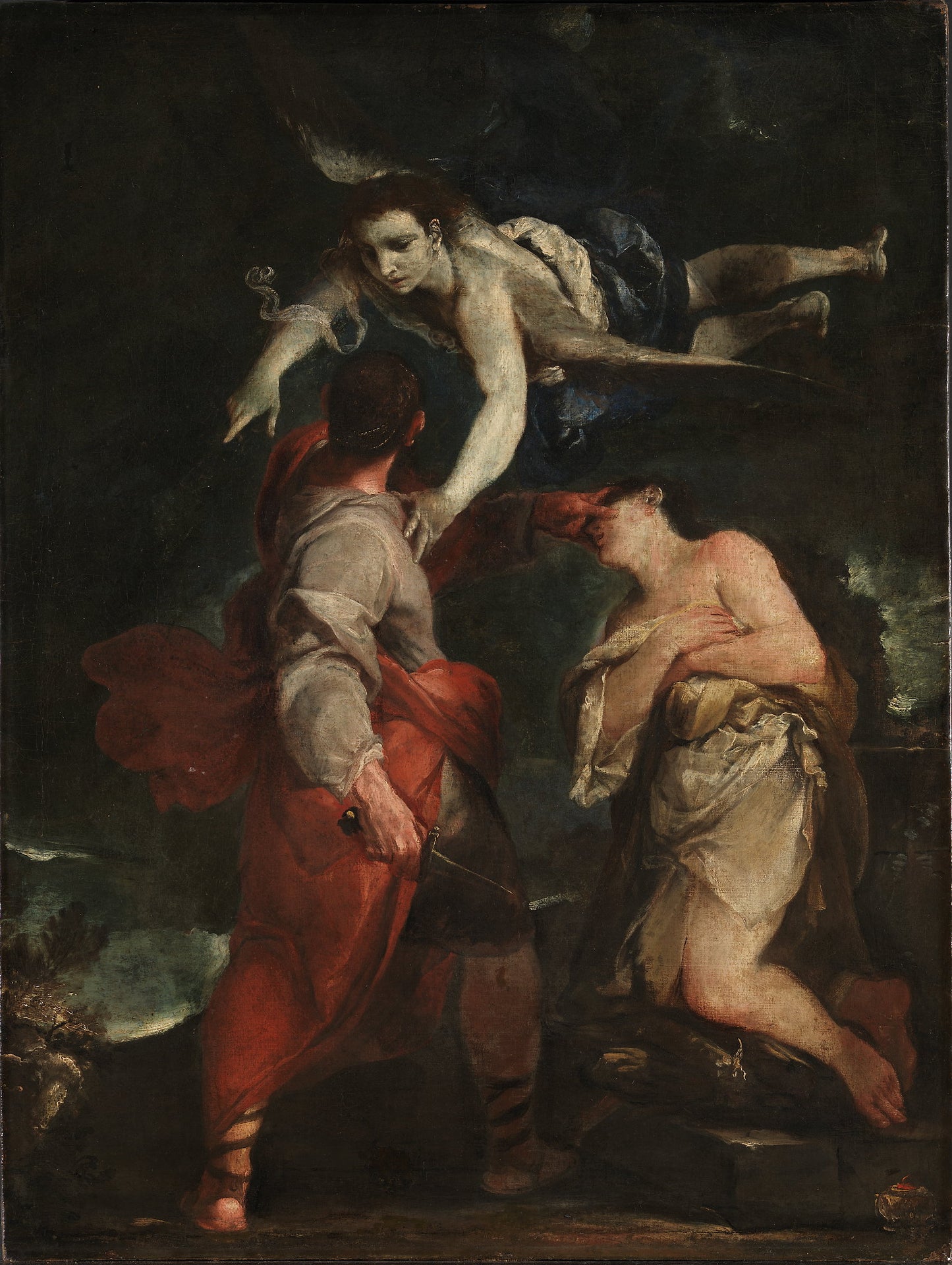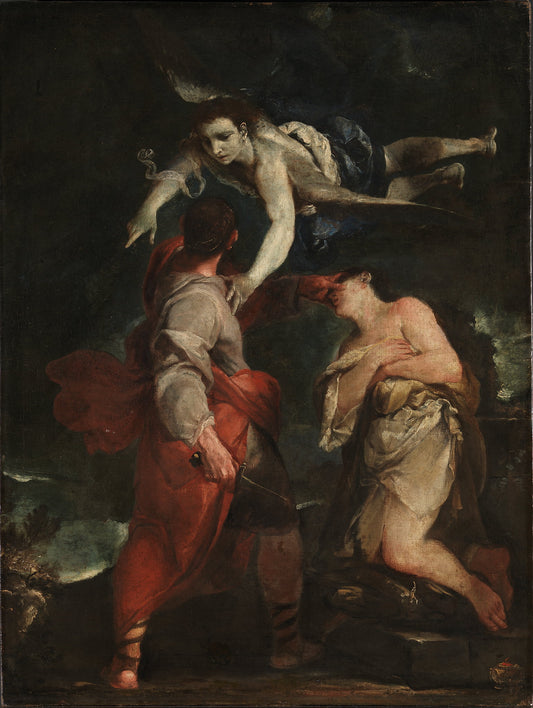Maria Giuseppe Crespi
Abraham's sacrifice
Abraham's sacrifice
Couldn't load pickup availability
High-quality reproductions from the National Museum's collection. Posters by DAIDDA are printed on Litho White Matt - 230 gram photo paper in premium quality. Artprints by DAIDDA are printed on Moab Entrada Natural 190 gram cotton art paper in premium quality. Produced by DAIDDA.
About the original:
Date: 1690s
Other titles: The Sacrifice of Abraham (ENG)
Designation: Painting
Material and technique: Oil on canvas
Technique: Oil
Material: Canvas
Dimensions: 75 x 99 cm
Subject: Visual arts
Classification: 532 - Visual arts
Motif: Biblical
Type of motif: Religious scene or person
Acquisition: Purchased 1987
Inventory no.: NG.M.03738
Part of exhibition: The dance of life. The collection from antiquity to 1950, 2011 - 2019
Older foreign art before 1915 from the National Gallery's collection, 2007 - 2008Registration level: Single object
Owner and collection: The National Museum of Art, Architecture and Design, Visual Art Collections
Photo: Høstland, Børre
Copyright: © Spike, John, Lange, Marit
Informant on production: Lange Marit, Informant on production: Spike John
Shipping and returns
Shipping and returns
Shipping: We deliver to Scandinavia, the EU, the USA and several other countries. Please contact us if your country is not listed and we will try to arrange delivery.
Delivery time: 2-5 days within Norway, 7 days in Europe, 14 days globally.
Packaging: Our products are made to order and sent rolled in environmentally friendly packaging.
Customs Fees: International orders may be subject to customs fees, which are not included in shipping costs.
Return policy: You can return images within 14 days. See our returns page for more information.
Secure Payment: We never store your payment details. See our privacy policy for details.

See all works
-
Abraham's Sacrifice - Maria Crespi Giuseppe (Framed 100x150)
Vendor:Maria Giuseppe CrespiRegular price 6.000,00 NOKRegular priceUnit price per0,00 NOKSale price 6.000,00 NOKSold out -
Abraham's sacrifice
Vendor:Maria Giuseppe CrespiRegular price From 150,00 NOKRegular priceUnit price per

Giuseppe Maria Crespi
Giuseppe Maria Crespi (born 14 March 1665 in Bologna, Church State, died 16 July 1747 in the same place) was an Italian painter from the late Baroque, associated with the Bologna school. He was known by the nickname "Lo Spagnuolo" ("the Spaniard"), due to his penchant for tight-fitting, Spanish-inspired clothing. Crespi worked in a wide range of paintings, including religious motifs and portraits, but he is today particularly known for his genre paintings.
Background
Giuseppe Crespi was the son of Girolamo Crespi and Isabella Cospi, and was distantly related to the noble Cospi family, which had connections to the Medici family of Florence. Crespi was nicknamed "Lo Spagnolo" by his fellow students due to his elegant and Spanish-inspired style of dress. He began his artistic education under the painters Domenico Maria Canuti and Carlo Cignani, and went on to study the works of masters such as Lodovico Carracci, Antonio da Correggio and Federico Barocci. In addition, he was a keen observer of nature.
Crespi diligently used a camera obscura to study light and shadow, as well as the people in the street, which characterized his paintings.
The paintings
Crespi's paintings are characterized by his experimentation with light and shadow, and he developed his own chiaroscuro style. He had an influence on other artists, such as Giovanni Battista Piazzetta. In his images of saints and heroic scenes, he often incorporated contrasting elements and showed a fondness for the mannered, even in shadowy parts and robes.
His works are known for their light compositions, powerful expressions and dynamic movement. Among his most famous works is the series "The Seven Sacraments" (exhibited in the Gemäldegalerie Alte Meister in Dresden), which was painted around 1712 for Cardinal Pietro Ottoboni in Rome. After Ottobon's death, these paintings were transferred to the Elector of Saxony. The series is recognized for its free brushstrokes combined with a sober piety, where Crespi uses everyday people to illustrate the holy sacraments using hieratic symbols such as saints and putti.



